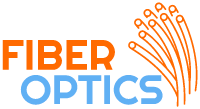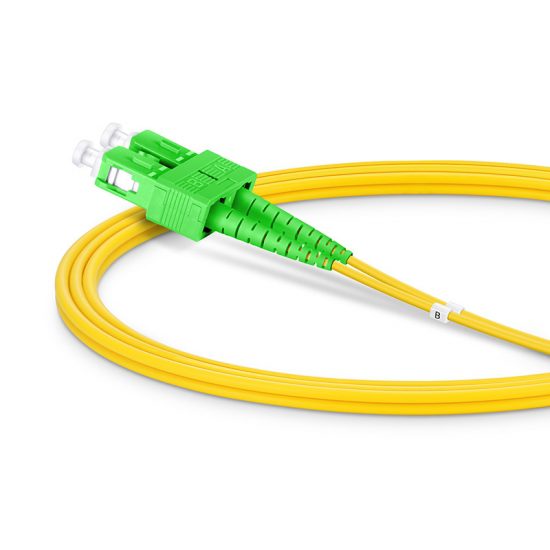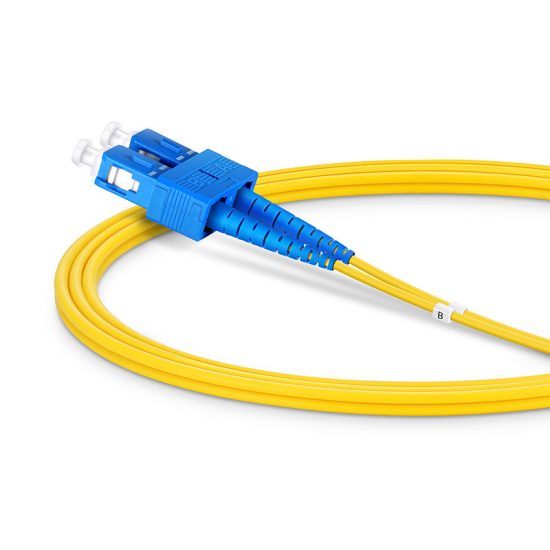A fiber adapter is a crucial component in fiber optic networks. It connects two fiber optic cables together and enables a continuous signal to be transmitted from one cable to the other. Fiber adapters come in a variety of sizes, shapes, and configurations to accommodate different types of fiber optic cables. They play a vital role in ensuring a secure and reliable connection between two fibers, and they can also be used to match different types of fibers, such as single-mode and multimode fibers.
Fiber adapters are used in a wide range of applications, including data centers, telecommunications networks, and enterprise networks. They are designed to be durable and long-lasting, and they can also be used in harsh environments, including extreme temperatures and high humidity levels. Some fiber adapters are also designed to be reusable, which can save time and money compared to replacing entire cable assemblies.
There are several different types of fiber adapters available, including SC, LC, ST, and MTP/MPO. SC and LC are the most common types of fiber adapters, and they are used for both single-mode and multimode fibers. ST adapters are typically used for multimode fibers, while MTP/MPO adapters are used for high-density fiber optic applications.
When choosing a fiber adapter, it is important to consider the type of fiber optic cable you are using, as well as the requirements of your network. For example, some fiber adapters are designed for specific applications, such as high-speed data transmission or high-density installations. It is also important to choose a fiber adapter from a reputable manufacturer, as this will ensure the highest quality and performance.
In conclusion, fiber adapters are an essential component in fiber optic networks, and they play a crucial role in ensuring secure and reliable connections between fiber optic cables. They come in a variety of sizes, shapes, and configurations to accommodate different types of fiber optic cables and are used in a wide range of applications, including data centers, telecommunications networks, and enterprise networks. When choosing a fiber adapter, it is important to consider the requirements of your network and choose a reputable manufacturer to ensure the highest quality and performance.
difference between fiber adapter, couplers and connectors
Fiber Adapters:
Fiber adapters connect two fiber optic cables together and allow a continuous signal to be transmitted from one cable to the other. They play a vital role in ensuring a secure and reliable connection between two fibers.
Fiber Couplers:
Fiber couplers are devices that split or combine optical signals between two or more fibers. They are commonly used in applications such as optical power distribution and optical signal monitoring.
Fiber Connectors:
Fiber connectors are devices that attach to the end of a fiber optic cable and provide a mechanical and optical connection to a device, such as an optical transceiver or optical switch. They are used to connect fiber optic cables to equipment and other fibers.
In conclusion, fiber adapters are used to connect two fiber optic cables together, fiber couplers are used to split or combine optical signals, and fiber connectors are used to connect fiber optic cables to equipment and other fibers. Each component plays a different role in a fiber optic network and is used in different applications.
There are several different types of fiber adapters available, including:
SC (Subscriber Connector) Adapters:
SC adapters are square-shaped connectors that feature a push-pull latching mechanism for quick and easy installation. They are among the most popular fiber adapters and are commonly used for both single-mode and multimode fibers.
LC (Lucent Connector) Adapters:
LC adapters are smaller than SC adapters and feature a similar push-pull latching mechanism. They are also popular for both single-mode and multimode fibers and are commonly used in high-density fiber optic applications.
ST (Straight-Tip) Adapters:
ST adapters have a round bayonet-style locking mechanism and are primarily used for multimode fibers. They are less common than SC and LC adapters but are still widely used in older fiber optic networks.
MTP/MPO (Multifiber Termination Push On/Multifiber Pull On) Adapters:
MTP/MPO adapters are used for high-density fiber optic installations and can support up to 12 fibers in a single connector. They are typically used in data centers and telecommunications networks.
FC (Fiber Channel) Adapters:
FC adapters feature a threaded connection and are typically used in high-speed data transmission applications. They are less common than other types of fiber adapters but are still used in some specialized applications.
E2000 Adapters:
E2000 adapters feature a push-pull latching mechanism and are commonly used in Europe and Asia. They are similar to SC adapters but have a different form factor.
SMA (SubMiniature version A) Adapters:
SMA adapters feature a threaded connection and are typically used in scientific and industrial applications. They are less common than other types of fiber adapters but are still used in some specialized applications.
When choosing a fiber adapter, it is important to consider the type of fiber optic cable you are using and the requirements of your network. Some fiber adapters are designed for specific applications, such as high-speed data transmission or high-density installations, so it is important to choose the right adapter for your needs.




